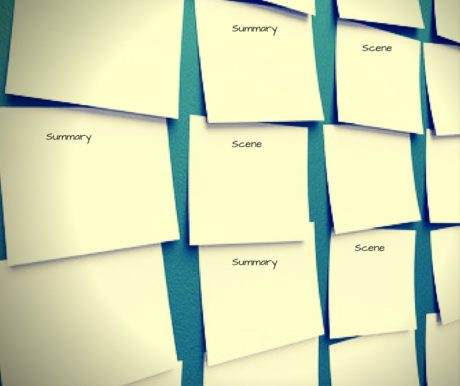It goes without saying all the benefits of reading to your children and grandchildren. The more you read to your children the more you set them up to succeed. They develop language skills, exercise their brains and enhance their concentration through reading. Reading encourages their thirst for knowledge, it teaches them about different topics and promotes imagination and creativity. If that wasn’t enough reading books with children helps them to develop empathy. When a child can put himself into the story, it helps them to build understanding. They identify with the character, and they feel what the child is feeling. Children begin to understand and relate to the emotions expressed in the story.
The characters in children’s books are often remembered for a lifetime because they are fundamental moments in a child’s development. Did you know that children who know stories about relatives who came before them show higher levels of emotional well-being, this according to a research report at Emory University. Family stories provide a sense of identity and help children understand who they are in the world.
Now allow their favourite hero to be a great-grandfather or great-great grandmother and your children will grow to appreciate their family story and develop what the professionals call an ‘intergenerational self.” The intergenerational self as interpreted by Emory University is defined as understanding one’s place in a familial history. They determined “the development of an intergenerational self, becomes a significant factor as children approach adolescence.
So, it occurred to me that instead of trying to force family history upon our relatives it might be easier to introduce it a little more subtlety when they are young through children’s books.
Having I just finished my first family history children’s book early this year I thought I would share with you some information to help you consider if you have a children’s book lurking in your research.
Children’s books are divided into 3 categories:
Pictures Books
0 to 3 years – board books, novelty books
3 to 5 years – picture books, ABC books
5 to 7 years – picture books, reading primers, colour storybooks
Middle Grade
8-12 years old
Young Adult
12 and up
Getting Acquainted with Children’s Books
Before you decide to write a children’s book, I urge you to get acquainted with children’s books, especially if you been away from children’s book for a while.
- Consult children’s section of the library/bookstore
- Notice the books your children/grandchildren or friend’s children are reading and enjoying
- Read reviews of children’s books
Classic Children’s Themes
Next, you want to familiarize yourself with children’s themes. Most children’s book will address one of the topics listed below. Understanding these themes, it will make it easier to help find stories within your research. Now, there certainly are other themes, but these are the major ones and are a great place to start.
- Courage – adventure, overcoming fears, immigration and migration are great examples in a family history.
- Friendship – sharing and helping each other
- Loss – loss parent or grandparent – through toy or something they value such as a pet.
- Growing up – accepting change, learning a lesson from life that allows you to mature.
- Belonging – stories about belonging to a group, not fitting in, helpful way of promoting tolerance and understanding.
- Anger – reassurance to children that they are not alone in their feelings.
- Jealousy – related to the theme of anger, a great example is the arrival of a new baby.
- Love – affirming love for someone and feeling love in return is the cornerstone of a happy childhood
Consider the themes listed about match them with events in your family history research. Think about your own childhood – list memories from your childhood, including favourite food, sweets, clothes, board games, toys trips, adults, holidays or particular incidents. Consider the journey of a family history artifact.
To find further inspiration for writing a children’s book consider reading what others have written.
Examples of Family History Children’s Books
Seven Brave Women by Betsy Hearne, 1997 for age 4-8 years old
This book is about the author’s unique female ancestors, including her grandmother who was a harpist-architectural-historian who passed on many of the stories in the book. The first page says that history books often marks time by the wars that men fought. Then each spread tells about an ancestor in the author’s family who made history by not fighting in wars. We read about a Mennonite woman who immigrated to Philadelphia, a hardworking homemaker, a horse-riding painter, a missionary doctor, a single mother working as a secretary, and a storyteller. The storyteller is the author’s mother. Seven brave women who left their imprints on the past and on her. Beginning with the great-great-great-grandmother who came to America on a wooden sailboat, these women were devout and determined and tireless and beloved.
My Mother’s Pearls by Catherine Myler Fruisen, 1995 Preschool-Grade 3
My Mother’s Pearls is geared toward little girls. It taps into their love for jewelry, beautiful dresses, and getting ready with mom. Going back in time through seven generations, the young narrator shares short anecdotes from her grandmothers and great-grandmothers who once wore (or played dress up with) the pearls. Little girl relates the story of her mother’s heirloom pearls, handed down each generation from mother to daughter on her wedding day. Readers glimpse a day in 1968 when the unnamed protagonist’s grandmother wore the pearls; a day in 1938, when her great-grandmother wore them; and so on, all the way back to 1788, when the young girl’s 6th great grandmother first received the necklace as a wedding gift from her husband.
Fancy Nancy: My Family History by Jane O’Connor, 2010
Nancy introduces readers to the fancy term “ancestors.” She wishes she had famous ancestors like her classmates. Instead, she learns about her great-grandpa who was plain and hardworking. She exaggerates his life in her school report but has a change of heart when she realizes she has something in common with her great grandpa.
Maman’s Special Job, by Lynn Palermo and illustrated by Josiane Vlitos, 2018, age 5-8.
Maman’ s Special Job is the true story taken from the family history of genealogist and writer Lynn Palermo. This story tells the account of a rural midwife as told through the eyes of her young son, Bert. Growing up in a French-Canadian family, Bert observes his mother’s job and how it affects his daily life. Ultimately, he learns what her kindness and sacrifice mean to their community.
s Special Job is the true story taken from the family history of genealogist and writer Lynn Palermo. This story tells the account of a rural midwife as told through the eyes of her young son, Bert. Growing up in a French-Canadian family, Bert observes his mother’s job and how it affects his daily life. Ultimately, he learns what her kindness and sacrifice mean to their community.














